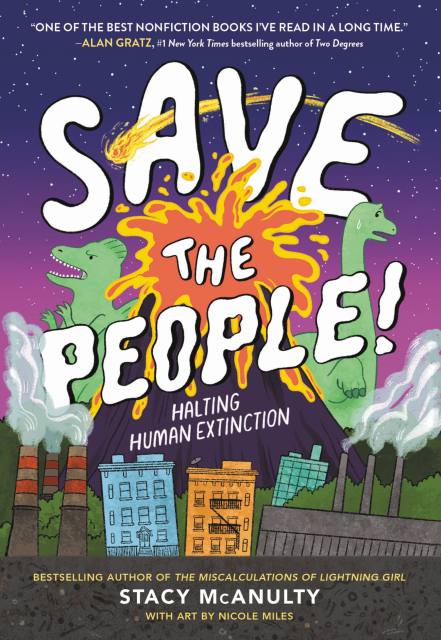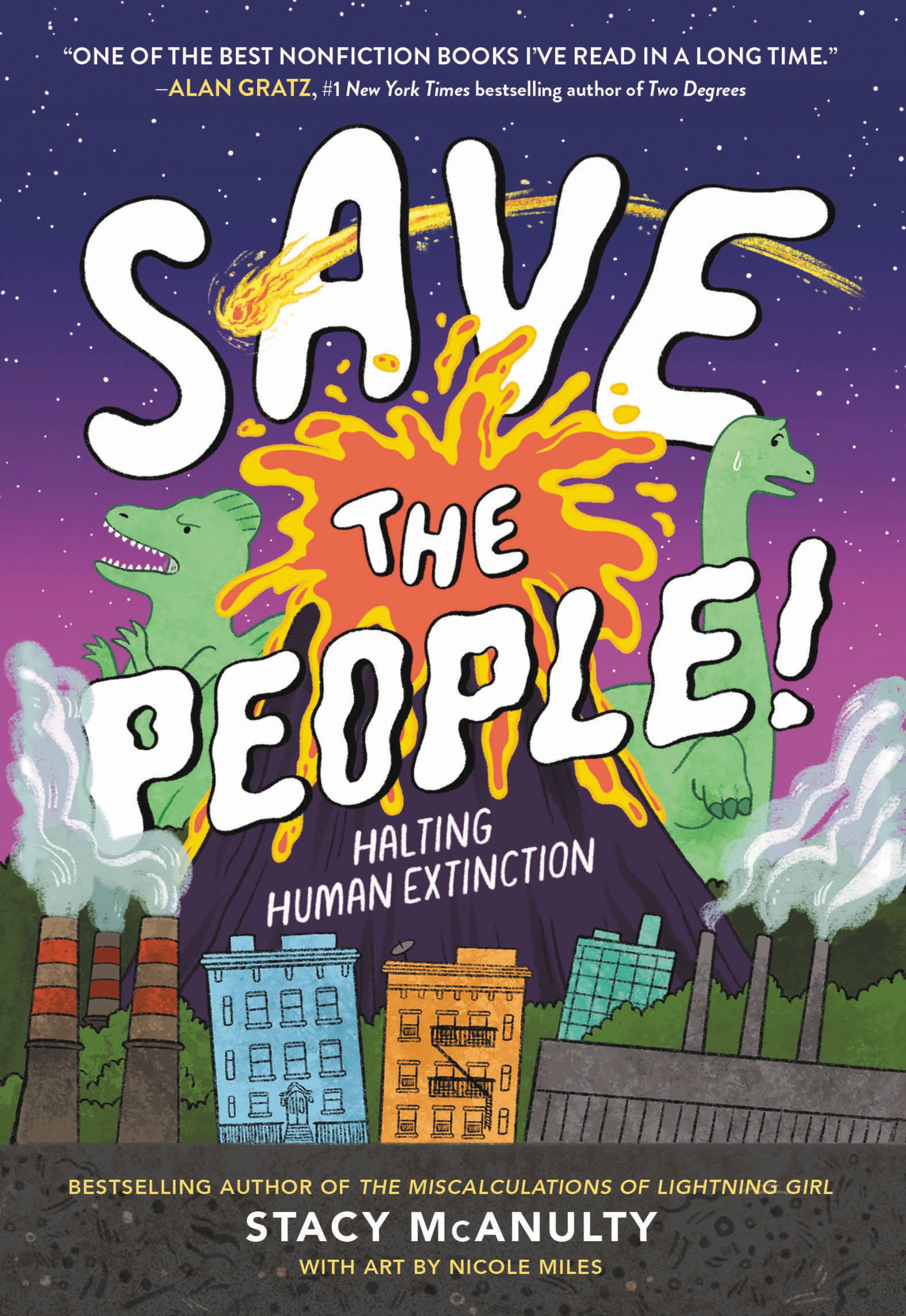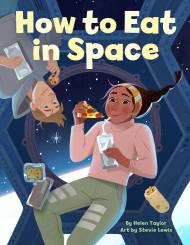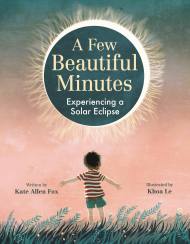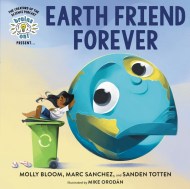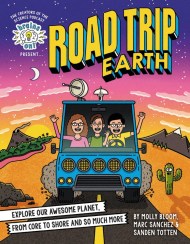Promotion
Use code MOM24 for 20% off site wide + free shipping over $45
Save the People!
Halting Human Extinction
Contributors
Illustrated by Nicole Miles
Formats and Prices
Price
$8.99Price
$12.99 CADFormat
Format:
- Trade Paperback $8.99 $12.99 CAD
- ebook $7.99 $9.99 CAD
- Hardcover $16.99 $22.99 CAD
This item is a preorder. Your payment method will be charged immediately, and the product is expected to ship on or around September 5, 2023. This date is subject to change due to shipping delays beyond our control.
Also available from:
"Serious science and great gags, with a bit of hope thrown in.” –Steven Sheinkin, bestselling author of Bomb and Fallout
An action-packed look at past, present, and future threats to humanity’s survival—with an ultimately reassuring message that humans probably have a few more millennia in us.
Scientists estimate that 99% of all species that have ever existed are now extinct. Whoa. So, it's not unreasonable to predict humans are doomed to become fossil records as well. But what could lead to our demise? Supervolcanos? Asteroids? The sun going dark? Climate change? All the above?!
Humans—with our big brains, opposable thumbs, and speedy Wi-Fi—may be capable of avoiding most of these nightmares. (The T. rex would be super jealous of our satellites.) But we're also capable of triggering world-ending events. Learning from past catastrophes may be the best way to avoid future disasters.
Packed with science, jokes, and black and white illustrations, Save the People! examines the worst-case scenarios that could (but hopefully won’t) cause the greatest mass extinction—our own!
Genre:
-
Praise for Save the People:
A SCBWI Golden Kite Award for Nonfiction Text for Older Readers Finalist
A 2023 Bank Street Best Book -
*"A casual but damning account of the future of our species, bound to turn many youngsters into climate activists."School Library Journal, starred review
-
“A lighthearted look at global catastrophe. (Think The Uninhabitable Earth meets Captain Underpants.)”New York Times Book Review
-
*“This book is full of dire facts, but it’s not doom and gloom. Its lively, conversational tone with plenty of jocular asides keeps it unintimidating and accessible…Lively writing, pertinent science, and an urgent topic make this a must-read for all.”Kirkus Reviews, starred review
-
“Stacy McAnulty has done the impossible: Writing a book about mass extinction that is a joy to read. Save the People is engaging, funny, affecting and delightful. You’ll never have more fun learning science.”Stuart Gibbs, bestselling author of the Spy School series
-
“Serious science and great gags, with a bit of hope thrown in.”Steve Sheinkin, author of Bomb and Fallout
-
"Cheeky banter wrapped around accessible science, a pages-long time line, charts, graphs, a bibliography, and extensive chapter notes contribute to this fresh take on saving our planet."Booklist
-
"What could easily come off as an apocalyptic, science-based horror story, author Stacy McAnulty instead handles with humor . . . backed by thorough research which is documented in an extensive notes section."School Library Connection
- On Sale
- Sep 5, 2023
- Page Count
- 272 pages
- Publisher
- Little, Brown Books for Young Readers
- ISBN-13
- 9780759553965
Newsletter Signup
By clicking ‘Sign Up,’ I acknowledge that I have read and agree to Hachette Book Group’s Privacy Policy and Terms of Use
